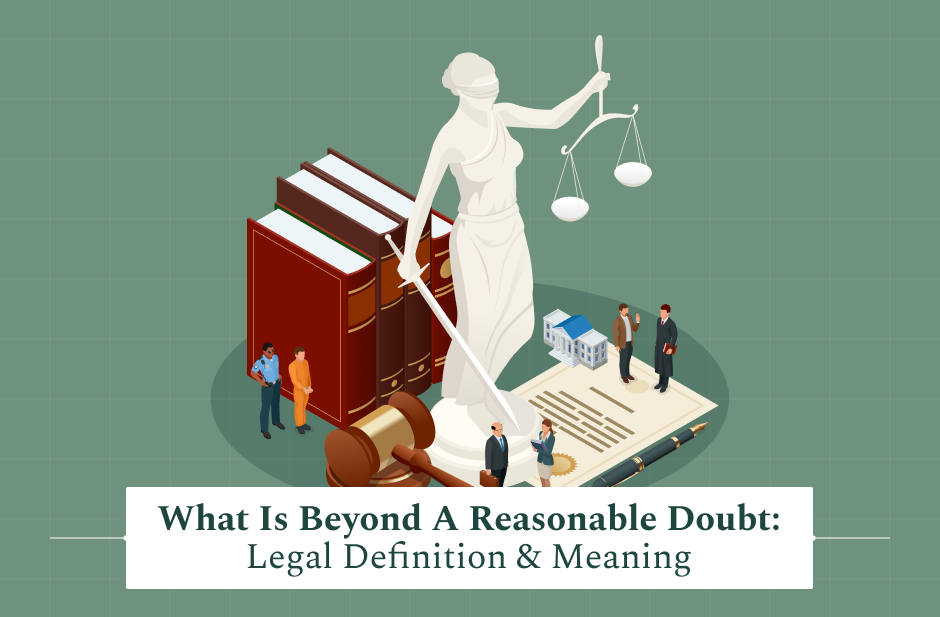In the American legal system, court decisions are not always final. For instance, let’s say that a party believes a trial court made an error in applying the law or violated their constitutional rights. In such cases, they can request a higher court to review the ruling.
This is where appellate jurisdiction comes into play. It serves as a safeguard, ensuring justice is delivered fairly by allowing oversight of lower court decisions. Without appellate jurisdiction, errors in trials could go unchecked, potentially leading to miscarriages of justice.
In this article, I will talk about the following things:
- What is appellate jurisdiction?
- What are the different types of appellate jurisdiction?
- The key aspects of this form of jurisdiction.
- The legal impacts of appellate jurisdiction.
Additionally, I will also talk about some of the most common questions that people often ask about appellate jurisdiction. So, if these are some things that you want to know, keep on reading this article till the end…
What Is An Appellate Jurisdiction?

Appellate jurisdiction defines a higher court’s power to reassess, alter, or quash the decision of a lower court. According to Cornet Law School, it “includes the power to reverse or modify the lower court’s decision.”
The latter does not perform a re-hearing of the testimony or a re-examination of the matter in the appellate courts. They limit their inquiry to checking if the law was correctly applied and if the procedure was fair and lawful.
To be specific, U.S. Courts of Appeals, as well as the U.S. Supreme Court, have the authority to review the cases going to them from federal district courts and some state courts. This serves the purpose of making sure that the decisions are in line with the Constitution and the federal laws.
Black’s Law Dictionary 11th ed. defines appellate jurisdiction as the “power vested in a superior court to review and revise the decision of an inferior court.”
What Are The Types Of Appellate Jurisdiction?
The concept of appellate jurisdiction may be classified into various types with respect to the scope and the legal structure of the jurisdiction:
- Mandatory Appellate Jurisdiction: The appellate court is obliged by law to hear the appeal. For instance, certain state supreme courts are inevitably required to take up death penalty cases.
- Discretionary Appellate Jurisdiction: The court has the power to decide whether or not to take up a case. For example, the U.S. Supreme Court has discretionary jurisdiction as it can decide, through the writ of certiorari, whether to accept a case or not.
- General Appellate Jurisdiction: It refers to the authority that encompasses most of the lower courts decisions for a review. The state appellate courts normally get the overall jurisdiction for the civil and criminal appeals from the general courts.
- Special/Subject-Matter Appellate Jurisdiction: It is confined to specific types of cases, such as tax disputes, bankruptcy, or military cases. For example, the U.S. Court of Appeals for the Federal Circuit is the court with the jurisdiction over patent cases.
What Are The Key Aspects Of An Appellate Jurisdiction?
When examining appellate jurisdiction, certain aspects define its scope and function. Here are the key aspects that you need to know about:
1. Scope of Review: Appellate courts typically review legal errors, not factual disputes. For example, misapplication of the law, improper jury instructions, or violation of constitutional rights.
2. Standard of Review: Different standards apply, such as:
- De novo (fresh review without deference to the lower court).
- Abuse of discretion (whether the lower court’s ruling was unreasonable).
- Clearly erroneous (applies to factual determinations).
3. Binding Authority: Appellate rulings set precedents, guiding future cases.
4. Written Opinions: Most appellate decisions are explained through written opinions, providing reasoning that contributes to legal clarity.
How Does An Appellate Jurisdiction Happen?
The appellate process generally follows these steps:
- Filing an Appeal: The losing party (the appellant) files a notice of appeal.
- Preparation of the Record: The trial court record, including transcripts, evidence, and rulings, is submitted to the appellate court.
- Written Briefs: Both parties present legal arguments in writing. The appellant argues that they had not made any error, while the appellee defends the trial court’s decision.
- Oral Arguments: In many cases, attorneys present arguments before appellate judges, answering questions about the law and precedent.
- Judicial Decision: The appellate court may affirm, reverse, remand (send back for retrial), or modify the lower court’s decision.
This process ensures that appeals are thorough. Additionally it ensures that there is no rush when it comes to making decisions in such cases. This helps to provide multiple checks before a final ruling is reached.
What Are The Legal Impact Of An Appellate Jurisdiction?
The presence of appellate jurisdiction has a major effect on the legal system:
- Promotes Fairness: It ensures that individuals have access to a remedy when they think they have been treated unfairly in a trial.
- Uniformity in Law: The higher courts keep up the uniformity in the way laws are interpreted in different areas.
- Precedent Setting: The court of appeals decisions most of the time provide the main precedent of future legal interpretations (e.g., Miranda v. Arizona, 384 U.S. 436 (1966)).
- Checks and Balances: The on-stage theatre thus completely fails to stop such functions since it can only check but never abuse at the same time, which on the contrary, appellate courts help by preventing errors or power abuse by the trial ones.
- Public Confidence in the Legal System: The public is comforted by the fact that mistakes can be fixed at higher levels.
Read Also: What Is An Alford Plea: Legal Definition & Meaning
Frequently Asked Questions (FAQs):
Here are some of the questions that people often ask about appellate jurisdiction. Take a look at them before you leave:
Not at all. The power of original jurisdiction defines the case(s) or controversies that a court can handle first, while appellate jurisdiction refers to a review done by a court which is higher in rank than the one that made the initial decision.
In most instances, no. Appellate courts are limited to the trial record. They do not allow the presentation of new evidence.
The Supreme Court of the U.S. is the highest appellate court, which has the authority to choose most cases for review.
No, courts of appeal do not have to accept every case. In appellation, they often decide not to review the case, especially if they have discretion over the case.
In case the court reverses a case, you can send it back to the lower court for a new trial or additional steps that align with the decision of the appellate court.
















